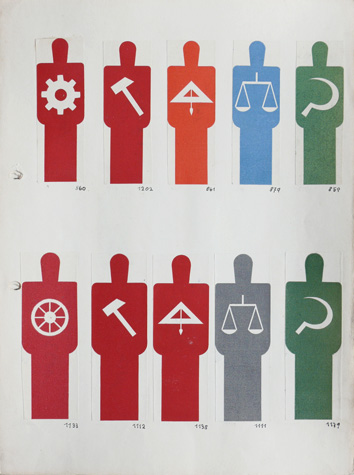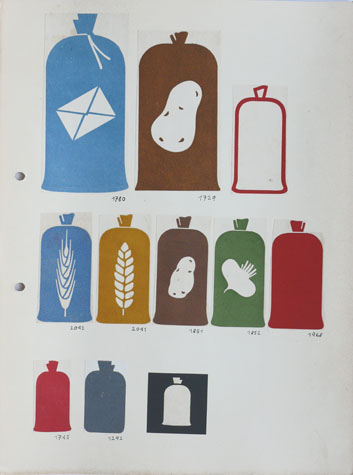
Isotype 'Picture dictionary'
Gesellschafts- und Wirtschaftsmuseum in Wien, c.1931, 300 x 225 mm, (I.C. 4/3) | read more...
The Isotype 'Picture dictionary' was a working reference file of pictograms designed and printed by linocut at the Gesellschafts- und Wirtschaftsmuseum in Vienna. Above is one of the sheets in the category 'Man': it shows the grammatical aspect of Isotype pictogram design, in which a symbol can be qualified, or made into a kind of compound noun, by combining it with another. The symbols within the human figures here indicate different kinds of profession.

Some objects resist typification: it seems almost impossible, for example, to design an immediately recognizable pictogram for 'potato'; attempts are shown here in two different versions inside the middle sacks of the first two rows. (CB)
area of research: Development of the Gesellschafts- und Wirtschaftsmuseum in Vienna (Burke)



